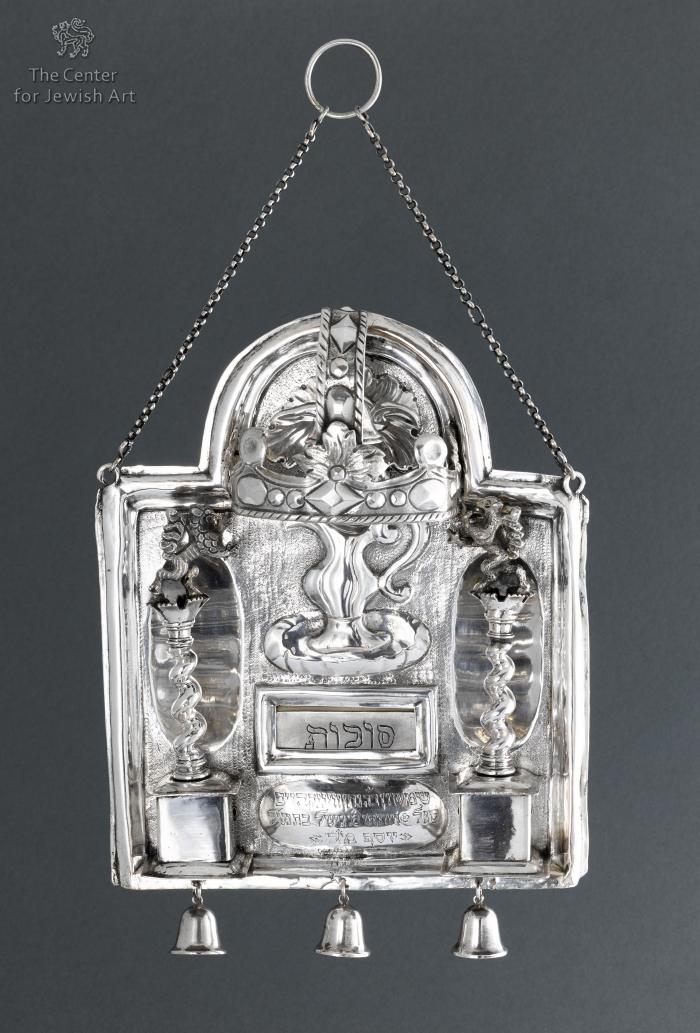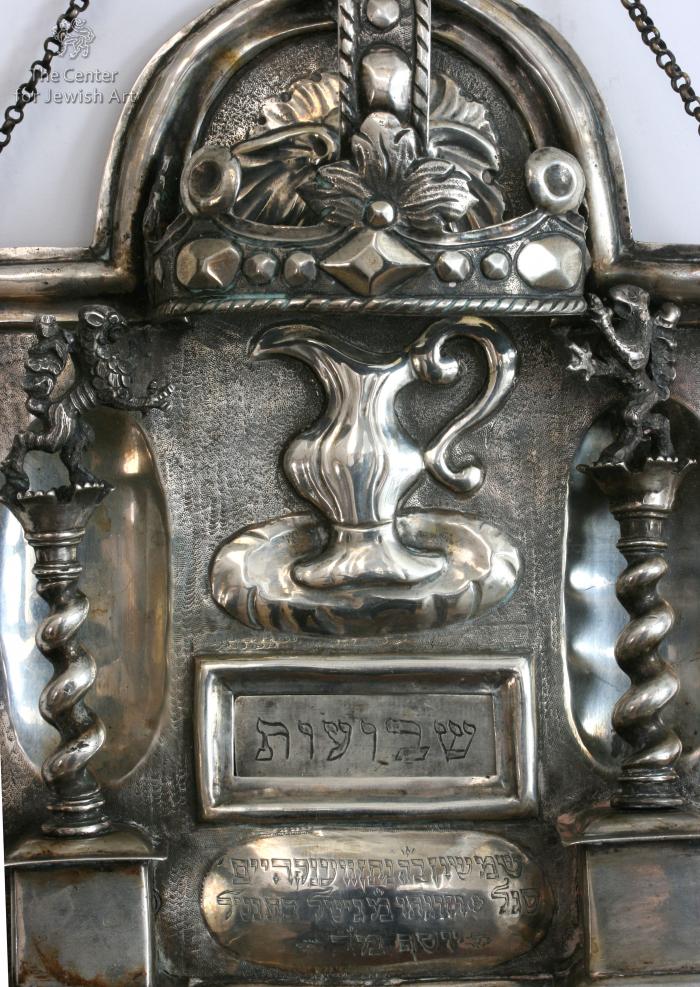Obj. ID: 37386 Torah shield, Fürth, circa 1780

sub-set tree:
C | Crown
C | Columns | Twisted columns
H | Heraldic composition | Supporters | Two lions
|
The following description was prepared by William Gross:
Breastplates – ornamental metal plates or shields hung in front of the Torah scroll – are found in all Ashkenazi communities, as well as Italy and Turkey, but designed differently in each community. In most cases the breastplate is made of silver or silver-plated metal. In Italy the breastplate is shaped like a half-coronet and known as the Chatzi-keter, "half-crown." In Turkey, the breastplate is called a Tas, and assumes a variety of shapes – circular, triangular, oval, or even the Star of David. In Western, Central, and Eastern Europe the breastplate is called either Tas or Tziz; its function there is not merely ornamental: it designates which Torah scroll is to be used for the Torah reading on any particular occasion, with interchangeable plaques.
The most notable early breastplates, from 17th-century Germany and Holland, were either square or rectangular, but over time they became rounded and decorative, and bells or small dedicatory plaques were suspended from its lower edge. During this period, the design of breastplates was influenced by that of the Torah Ark and the parokhet (curtain) concealing it, featuring various architectural motifs, the menorah (the seven-branched candelabrum), Moses and Aaron, lions, or Torah crowns.
Thid is a classic example of the form from Fuerth and Nuremberg from the last part of the 18th century. However, the use of the Levite symbol as the central motif between the nicely three dimensional twisted columns is unusual. There is an incription recording the donation of this shield by a couple. The silversmith is a famed artisan from Fuerth whose initials J R appear many times on Judaica from this area and this period. He worked extensively for the Jewish synagogues of the place.
Inscription: Shimshon ben haRav Natan Venckheim Segal and his wife Mrs. Gitel bat Netel Yosef from B?
שמשון ב"ה נתן ווענקהיים סגל וזוגתו מ' גיטל בת נטל יוסף מ"ב.





